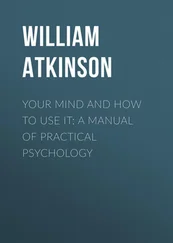In the early decades of the twentieth century, Popper was searching for the underlying reasons that some scientific theories seem to lead to advances in knowledge and others lead to intellectual stagnation (Hacohen, 2000). Einstein’s general relativity theory, for example, led to startlingly new observations (for instance, that the light from a distant star bends when it passes near the sun) precisely because its predictions were structured so that many possible events could have contradicted them and, thus, falsified the theory.
Popper reasoned that this is not true of stagnant theories—and pointed to Freudian psychoanalysis as an example. Freudian theory uses a complicated conceptual structure that explains human behavior after the fact—that is, after it has occurred—but does not predict things in advance. In short, Freudian theory can explain everything. However, as Popper argued, it is precisely this property that makes it scientifically useless. It makes no specific predictions. Adherents of psychoanalytic theory spend much time and effort in getting the theory to explain every known human event, from individual quirks of behavior to large-scale social phenomena. But their success in making the theory a rich source of after-the-fact explanation robs it of any scientific utility. Freudian psychoanalytic theory currently plays a much larger role as a spur to the literary imagination than as a theory in contemporary psychology. Its demise within psychology can be traced in part to its failure to satisfy the falsifiability criterion (Wade & Tavris, 2008).
But the existence of such unfalsifiable theories does real damage. For example, explanations for the cause of autism (in part a genetically determined disorder) were led down a blind alley by psychoanalytic explanations for the condition. Influenced by psychoanalytic ideas, psychologist Bruno Bettelheim popularized the now-discredited notion of “refrigerator mothers” as the cause and thought that “the precipitating factor in infantile autism is the parent’s wish that his child should not exist” (Offit, 2008, p. 3). Ideas like this not only did damage, but they set back the study of autism.
As another example, consider the history of Gilles de la Tourette syndrome. This is a disorder characterized by physical tics and twitches that may involve any part of the body, as well as vocal symptoms such as grunts and barks, echolalia (involuntary repetition of the words of others), and coprolalia (compulsive repetition of obscene words). Tourette syndrome is an organically based disorder of the central nervous system and is now often successfully treated with drug therapies (Scahill et al., 2006; Smith, Polloway, Patton, & Dowdy, 2008). Throughout history, individuals with Tourette syndrome have been persecuted—earlier as witches by religious authorities, and in more modern times by being subjected to exorcisms (Hines, 2003). Importantly, understanding of the cause and treatment of the disorder was considerably hampered from 1921 to 1955, when explanations and treatments for Tourette syndrome were dominated by psychoanalytic conceptualizations (see Kushner, 1999). Author after author presented unfalsifiable psychoanalytic explanations for the syndrome. The resulting array of vague explanations created a conceptual sludge that obscured the true nature of the syndrome and probably impeded scientific progress toward an accurate understanding of it. For example, according to one author,
[Tourette syndrome is] a classic example of the retrogressive effect of psychoanalysis on the investigation of brain disease. La Tourette had attributed the disease to a degenerative process of the brain. After Freud’s theories became fashionable in the early decades of the present century, attention in such conditions was deflected from the brain. . . . The consequence of this retrograde movement was that patients tended to be referred to psychiatrists (usually of a psychoanalytic persuasion) rather than to neurologists, so that physical examinations and investigation were not performed. (Thornton, 1986, p. 210)
Shapiro, Shapiro, Bruun, and Sweet (1978) described one psychoanalyst who thought that his patient was “reluctant to give up the tic because it became a source of erotic pleasure to her and an expression of unconscious sexual strivings.” Another considered the tics “stereotyped equivalents of onanism. . . . The libido connected with the genital sensation was displaced into other parts of the body.” A third considered the tic a “conversion symptom at the anal-sadistic level.” A fourth thought that a person with Tourette syndrome had a “compulsive character, as well as a narcissistic orientation” and that the patient’s tics “represent[ed] an affective syndrome, a defense against the intended affect.”
In fact, these examples were numerous and typical in their uninformed overconfidence. Developmental psychologist Jerome Kagan (2006) tells us how “Sandor Ferenczi, a disciple of Freud who had never seen a patient with Tourette’s syndrome [italics added], made an equally serious error when he wrote that the frequent facial tics of people with Tourette’s were the result of a repressed urge to masturbate” (p. 179).
The summary by Shapiro et al. (1978) of the resulting theoretical situation demonstrates quite well the harmful effects of ignoring the falsifiability criterion: Psychoanalytic theorizing of this kind in effect leaves no base untouched. Tics are a conversion symptom but not hysterical, anal but also erotic, volitional but also compulsive, organic but also dynamic in origin. . . . These psychological labels, diagnoses, and treatments were unfortunately imposed on patients and their families, usually with little humility, considerable dogmatism, and with much harm. . . . These papers, because of their subsequent widespread influence, had a calamitous effect on the understanding and treatment of this syndrome. (pp. 39–42, 50, 63)
Progress in the treatment and understanding of Tourette syndrome began to occur only when researchers recognized that the psychoanalytic “explanations” were useless. These explanations were enticing because they seemed to explain things. In fact, they explained everything—after the fact. However, the explanations they provided created only the illusion of understanding. By attempting to explain everything after the fact, they barred the door to any advance. Progress occurs only when a theory does not predict everything but instead makes specific predictions that tell us—in advance—something specific about the world. The predictions derived from such a theory may be wrong, of course, but this is a strength, not a weakness.
It is not difficult to recognize unfalsifiable conceptualizations when one is detached from the subject matter and particularly when one has the benefit of historical hindsight (as in the Benjamin Rush example). It is also easy to detect unfalsifiable conceptualizations when the instance is obviously concocted. For example, it is a little known fact that I have discovered the underlying brain mechanism that controls behavior. You will soon be reading about this discovery (in the National Enquirer , available at your local supermarket). In the left hemisphere of the brain, near the language areas, reside two tiny green men. They have the power to control the electrochemical processes taking place in many areas of the brain. And, well, to make a long story short, they basically control everything. There is one difficulty, however. The little green men have the ability to detect any intrusion into the brain (surgery, X-rays, etc.), and when they do sense such an intrusion, they tend to disappear. (I forgot to mention that they have the power to become invisible.) I have no doubt insulted your intelligence by using an example more suitable for elementary school students. I have obviously concocted this example so that my hypothesis about the little green men could never be shown to be wrong. However, consider this. As a lecturer and public speaker on psychological topics, I am often confronted by people who ask me why I have not lectured on all the startling new discoveries in extrasensory perception (ESP) and parapsychology that have been made in the past few years. I have to inform these questioners that most of what they have heard about these subjects has undoubtedly come from the general media rather than from scientifically respectable sources. In fact, some scientists have looked at these claims and have not been able to replicate the findings. I remind the audience that replication of a finding is critical to its acceptance as an established scientific fact and that this is particularly true in the case of results that contradict either previous data or established theory.
Читать дальше












